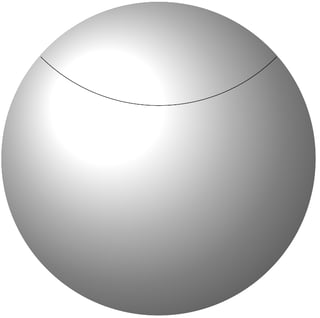The solid angle formula calculates the surface area on a unit sphere, from projecting a rectangular patch onto the surface of a sphere.
This is calculated using the azimuth angle $\phi$ and the elevation angle $\theta$:
$$\Omega = \int_{0}^{\phi} \int_{0}^{\theta} \sin{\theta'} d\theta' d\phi $$
However an antenna beam pattern will project a curved patch onto a sphere.
Case 1: Circle projection
First consider a linearly polarized, symmetrical parabolic dish antenna. This ideal geometry ensures the E/H planes have the same beamwidth. A circle is projected onto the unit sphere.
Note this is equivalent to the surface area of a hemisphere between the circle and the sphere.
$$\Omega = \int_{0}^{2\pi} \int_{0}^{\theta} \sin{\theta'} d\theta' d\phi = 2\pi(1-\cos{\theta})$$
Case 2: Ellipse projection
Now consider any linearly polarized antenna, such that the E/H planes have different beamwidths. I presume this would be projecting an ellipse onto the unit sphere.
I presume the solid angle can be calculated from the surface area of a semi-ellipsoid. A solid angle is a fraction of the surface area of the unit sphere, the ellipsoid is not coincident with a sphere (other than the trivial case), so this can't be correct.
Some questions:
- How can the solid angle formula be used to derive the (elliptical) solid angle of an antenna with a beamwidth of $\phi$ degrees in the E-plane and $\theta$ degrees in the H-plane?
- Are there any approximations to this?


